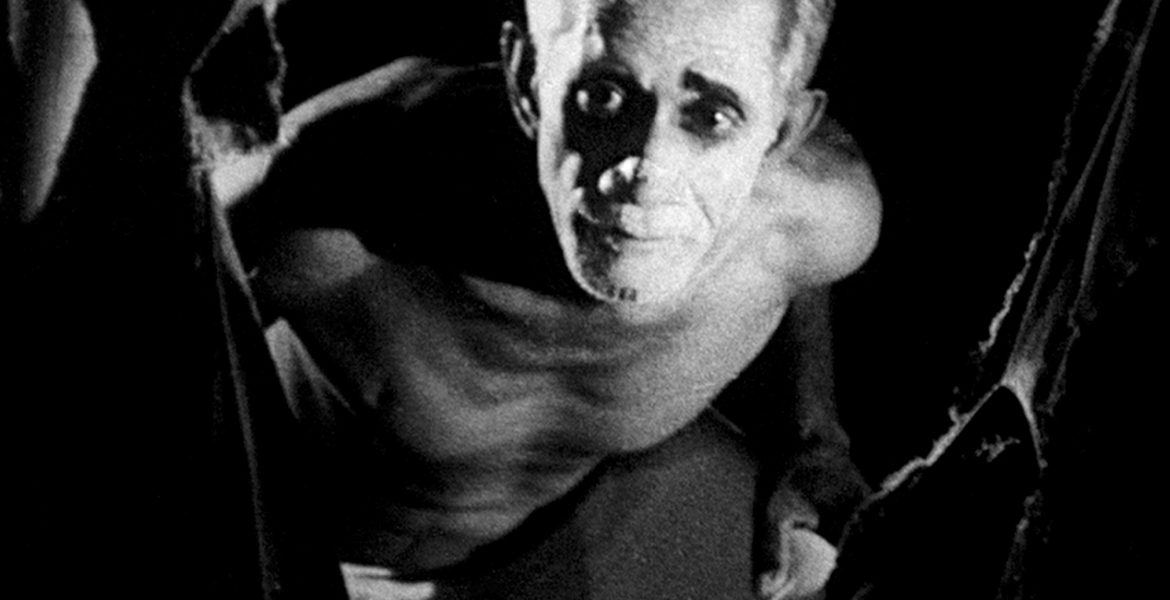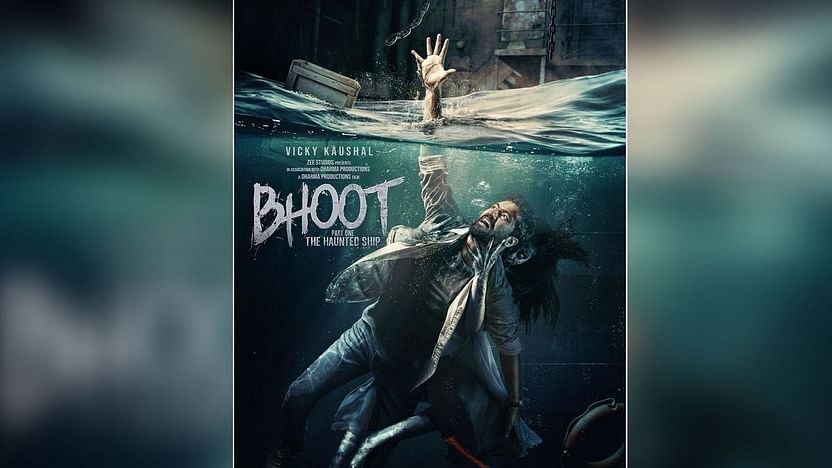Film Heritage Foundation, a not-for-profit organization founded by filmmaker and archivist Shivendra Singh Dungarpur has joined hands with Prasad Corporation Pvt. Ltd. to restore maverick Indian filmmaker Aravindan Govindan’s acclaimed film “Thamp̄” (1978) in association with The Film Foundation’s World Cinema Project and Cineteca di Bologna.
Heralding a landmark coup, the restoration has been selected for a red-carpet premiere at the prestigious Cannes Film Festival this year, making it the only Indian film to have a world premiere in the Cannes Classic section of the festival.
In March of 2021, Film Heritage Foundation orchestrated the conferment of the prestigious FIAF Award to Amitabh Bachchan by the International Federation of Film Archives. Icons of world cinema and film directors Martin Scorsese and Christopher Nolan, who also share a long-standing relationship with India through their affiliation with Film Heritage Foundation, had bestowed the award on Amitabh Bachchan.
SHIVENDRA SINGH DUNGARPUR, DIRECTOR, FILM HERITAGE FOUNDATION
Film Heritage Foundation is so proud that we restored a cinematic gem like Aravindan’s “Thamp̄” and that it has received the recognition it deserves by being selected for the Cannes Film Festival. It is one of the few Indian films that will be screened as part of the festival in Cannes this year.
As a foundation, we have always believed that when we choose a film to be restored, our decision is not based solely on the merits of the film as a classic. Weightage is also given to the “endangered status” of the film in terms of what is the material that survives of the film.
I first saw “Thamp̄” when I was a student of filmmaking at the FTII, Pune and the film made a deep impression on me. It amazed me how Aravindan managed to elevate his cinéma-vérité approach to the film to pure poetry. This was a film that shaped my approach as a filmmaker, so when I realized that no original camera negative of the film survives, as was the case sadly for most of his films, and his films were slowly disappearing, I knew that if we did not restore his films on a priority basis, the work of a master, presented in a manner that is true to his original vision, could be lost to the world forever.
We were fortunate that the producer K. Ravindranathan Nair of General Pictures had the vision to support this endeavour by granting us the permission to restore the film and that Prasad Corporation Pvt. Ltd. agreed to come on board as partners for the restoration along with our longtime collaborators Martin Scorsese’s The Film Foundation’s World Cinema Project and Cineteca di Bologna.
It is a dream come true that we have been able to restore two of Aravindan’s films “Thamp̄” and “Kummatty” to world-class standards. We hope that this will set the benchmark for future Indian restorations.”
RAMU ARAVINDAN, PHOTOGRAPHER AND GRAPHIC DESIGNER, SON OF ARAVINDAN GOVINDAN
It feels wonderful because Thamp̄’s restoration is really about materialising something that film viewers know exists somewhere but can’t get to watch.
Aravindan’s films were seen and discussed widely in the mid-1970s to the mid-1990s, as carriers of a unique but very specific kind of visual-poetic sensibility. That reputation endured even as a younger generation of viewers and filmmakers grew up. His reflective kind of cinema continued to be discussed. Only this time, it was mostly by word of mouth—good digitisations of these films were hardly available. Quite ironic for a very visual filmmaker! I’m sure the restored Thamp̄ (The Circus Tent) will bridge some of that gap. Film Heritage Foundation, who’s working on this, is passionate about doing what they do really, really well. Of course, running alongside that passion is an incredible amount of perseverance and attention to detail.
K. RAVINDRANATHAN NAIR, PRODUCER, GENERAL PICTURES
I’m extremely pleased that the film Thamp̄ directed by Aravindan and produced by me is being screened at the Cannes Film festival over forty years later. I would like to thank Shivendra Singh Dungarpur and Film Heritage Foundation for restoring this film so beautifully and showcasing it on such a prestigious international platform. I am so happy that both Aravindan’s films “Kummatty” and “Thamp̄” have been restored in a way that respects Aravindan’s work as an artist. I wish that my friend Aravindan had lived to see this.
THE RESTORATION PROCESS – SHIVENDRA SINGH DUNGARPUR, DIRECTOR, FILM HERITAGE FOUNDATION
The restoration was a challenging process that took almost eight months of painstaking work. We were aware that the National Film Archive of India (NFAI) had film elements of “Thamp̄” in its collection, but we needed to ascertain exactly what they had and assess the condition of the material. Film Heritage Foundation, as a member of the International Federation of Film Archives (FIAF), also put out a call to all the 171 member institutions around the world to check if they had film elements of “Thamp̄” in the hope that we might still discover good condition prints or dupe negatives in some part of the world. However, the only response we got was from the Fukuoka Archive in Japan that had prints with Japanese subtitles burned into the print, which made the material unusable for a restoration.
We then got in touch with the NFAI and our film conservators travelled to Pune to do a condition assessment of the Thamp̄ film elements in their collection. While not the original camera negative, which would have been the best source element, we found that we could use a dupe negative struck from a 35mm print that was at the NFAI. A second 35 mm print could be used for comparison. As per our condition assessment report, there were tears and broken sprockets in the films which needed to be repaired by our conservators. Also, as the dupe negative was struck from a print, it did not have as much latitude as an original camera negative would have had. We first did a test scan of both the print and the dupe negative. Having worked with both Prasad Studio in Chennai and L’Immagine Ritrovata, Bologna in the past, we decided that we would split the restoration process between the two labs and requested Davide Pozzi, Director of L’Immagine Ritrovata, one of the best restoration labs in the world, to supervise the restoration.
We spoke to Sai Prasad of the Prasad Corporation Pvt. Ltd. in Chennai, who agreed to partner with us on the restoration by doing the scanning and digital clean-up of the film at their facilities in Chennai. As a good quality scan is the basis of a world-class restoration, Davide Pozzi set the parameters of the scan and agreed to oversee the process. The scanning of the picture and sound and the hours of manual work that went into the digital clean-up of the scratches, tears and image stabilization and to ensure that the grain of the original celluloid material was maintained – was a process that needed constant coordination between Shivendra Singh Dungarpur in Mumbai, the Prasad technicians in Chennai and the lab in Bologna.
We involved Ramu Aravindan, photographer and graphic designer, and the son of Aravindan, every step of the way, to give us inputs on his father’s vision of the film. We also spoke to eminent filmmaker and cinematographer, Shaji N. Karun, who shot the film, who told us that the film had been shot on Indu stock (an indigenous film stock manufactured in India) and about the lighting scheme and compositions of the stunning black and white imagery of the film. The colour grading, which was personally supervised by Shaji N. Karun and Ramu Aravindan, and sound restoration of the film was done at L’Immagine Ritrovata, Bologna.
We are hoping that by showcasing the Thamp̄ restoration at Cannes, it will give new life to the work of a true artist like Aravindan whose work must not be forgotten.
RESTORATION CREDITS
Restored by Film Heritage Foundation in association with The Film Foundation’s World Cinema Project, Cineteca di Bologna at Prasad Corporation Pvt. Ltd.’s Post – Studios, Chennai, and L’Immagine Ritrovata Laboratory, and in association with General Pictures, National Film Archive of India and the family of Aravindan Govindan.
Funding provided by Prasad Corporation Pvt. Ltd. and Film Heritage Foundation.
CAST AND CREW DETAILS
Thamp̄ (The Circus Tent), India, 1978, Aravindan Govindan
129 minutes, B&W, Malayalam, English Subtitles, Aspect Ratio 1.33, 4K DCP
Script: Aravindan Govindan, Cinematographer: Shaji N. Karun, Sound: Devadas, Editor: A. Ramesan, Music: Kavalam Narayana Panicker and M.G. Radhakrishnan, Production House: General Pictures, Kollam, Producer: K. Ravindranathan Nair
Cast: Bharath Gopi, Nedumudi Venu, D. P. Nair, Sreedharan Chambad, Jalaja, Murikkoli Krishnan, Shreeraman, Kottara Gopalakrishnan, Njeralath Rama Poduval, Artistes of the Great Chitra Circus, Residents of Thirunavaya village on the river Bharathapuzha.
ABOUT THAMP̄ (The Circus Tent) (1978)
Aravindan Govindan’s Thamp̄ is a poetic, allegorical film, that gently explores the transience of human relationships and the rootlessness of the marginalized through the ripples created in the bucolic existence of a village on the banks of a river by the arrival of a roving circus troupe. In cinéma-vérité style, G. Aravindan rounded up a troupe of actual circus artistes and travelled with them to the village of Thirunavaya on the banks of the Bharathapuzha river. On the first day, the circus was set up and all the villagers were invited to watch the show. Aravindan said in an interview, “We did not have a script and we shot the incidents as they happened. . . There were a lot of people who had not seen a circus before. We shot their responses as they were watching. After the initial hesitation, they forgot the lights and the shooting and got completely involved in the circus.” For three days, the circus is the centre of attention of village life, but soon the villagers lose interest and move on to the preparation for a local festival and the circus troupe packs up and trundles away leaving no trace. The theme of alienation is further explored through the irony of an upper middle class young man who on returning to his village from overseas finds himself isolated in his own milieu and hopes to escape his discontent by joining the circus troupe in their drifting existence. The beauty of the film lies in the reflective silences, the deeply observational, but delicate gaze of the camera, juxtaposing the pathos of the circus performers as they go about their everyday tasks and more starkly in impassive close-ups as they speak directly to the camera, against the innocent wonderment of the captivated village audience, in black and white imagery that stays with you long after the big tent has folded up.
ABOUT ARAVINDAN GOVINDAN
Aravindan Govindan was one of India’s most extraordinary filmmakers and a leading light of the New Indian Malayalam cinema of the 1970s and ‘80s. A true Renaissance man – he was a painter, cartoonist, musician, theatre director, and filmmaker. An autodidact, his films were free from the weight of film canon, marked by an entirely original approach to cinema. In a tragically short career spanning from 1974 to 1991, he made 11 films and 10 documentaries with almost all of his films receiving national or state awards.
From his first film “Uttarayanam (1975) to his last “Vasthuhara” in 1991, his remarkable filmography included cinematic gems like “Kanchana Sita” (1977); “Thamp̄” (1978); “Kummatty” (1979); “Pokkuveyil” (1982); “Chidambaram” (1985) and “Oridathu” (1987).
He has been described as a poet-philosopher with a vision, who made mystical, transcendental films that showed deep compassion for the eccentric, the marginalized, and the alienated. In the words of Aravindan – “Cinema, like painting or music, is best when it is pure and serves an aesthetic function.” And each of his works is a testimony to the purity of his philosophy as an artist.
ABOUT FILM HERITAGE FOUNDATION
Film Heritage Foundation is a non-profit organization based in Mumbai set up by Shivendra Singh Dungarpur in 2014. It is dedicated to supporting the conservation, preservation, and restoration of the moving image and to developing interdisciplinary programmes to create awareness about the language of cinema.
A member of the International Federation of Film Archives (FIAF) since 2015, Film Heritage Foundation is the only non-governmental organization in the country working in the field of film preservation.
The advisory council is comprised of such stalwarts as Shyam Benegal, Kamal Haasan, Girish Kasaravalli, Gulzar, Gian Luca Farinelli, Jaya Bachchan, Krzysztof Zanussi, Mark Cousins, and Kumar Shahani. Amitabh Bachchan is our brand ambassador.
Our core programmes include the preservation and archiving of films and film-related memorabilia, training in film preservation and restoration, children’s workshops, digitization and restoration, oral history projects and publications.
Our first foray into restoration was the facilitation of the restoration of Uday Shankar’s “Kalpana” (1948) and Dr. Lester Jamies Peries’ “Nidhanaya”(1972) with The Film Foundation. Subsequently we restored Aravindan’s “Kummatty” (1979) in association with The Film Foundation’s World Cinema Project and Cineteca di Bologna. Aravindan’s “Thamp̄”, our latest restoration is the first film restoration project out of India that has been helmed by us.











